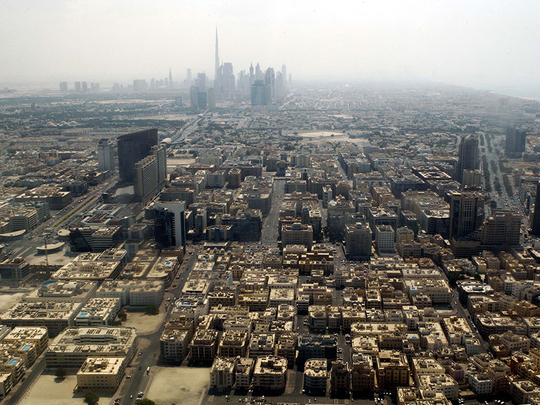
Dubai: Dubai’s ambitious building classification project across the city’s older neighbourhoods has gone past the 90 per cent mark, according to a top official. The survey was launched in 2015 and due for completion by year-end.
‘The aim is to update the plot and building details as per the actual site conditions,” said Mohammad Al Dah, Technical Affairs Director at Dubai Land Department. “The main issue is that, historically, the Land Department only recorded land ownership details in non-freehold areas.
“That was because the local and GCC owners are not allowed to sell off individual units.
“We have no problem with the ownership data (available with the Land Department). We want to gather various data including the number of units (for use as shops, flats or offices, etc) per plot of land.
“Also, we are documenting various useful data that may be used by others such as sustainability features and how well a building is managed. We also document, for example, if the building overlooks the sea.”
“Some very old buildings have been very-well maintained and that makes it hard for us to estimate its age. We expect to finish Phase 1 of collecting basic building data by the end of 2017.”
Some of Dubai’s older areas are going through a massive transformation, and not just in terms of additional roadways or flyovers. The property known to all as the “Sana Building” and located opposite Zabeel Park is making way for a twin-tower. In fact, much of the area around Zabeel Park and World Trade Centre are seeing a wave of new projects, including the “One Za’abeel” twin tower development and to feature the world’s largest cantilever.
On the website of Dubai Government owned master-developer Ithra, which is building One Za’abeel, there is a mention of the “Deira Enrichment Project. It aims to create apartment blocks overlooking The Creek and will also oversee an extension of the Deira Souq.
Amid all of the new building activity, what of the older structures? Once the classification works are done, will those landlords have to start retrofitting and upgrading those older properties?
“Not at this moment,” said Al Dah, who is also associated with the Institution of Structural Engineers. “In general, it’s hard to retrofit or upgrade an existing building for various reasons such as a lack of existing drawings, the lack of original building materials, change of use, change in legislation, etc.
“However, this is a worthwhile exercise for some buildings in very central locations, where upgrading the building will preserve its monetary value as well as historical value.”
This is phase one of the survey. If so, what will be the scope of any future extensions to the programme? “A phase two if it happens will look at linking the Ejari with the Building Classification Survey, issuing “star” ratings for buildings and linking them to a rental calculator, and/or preparing in-depth reports about the Dubai market.”
Debate on building retrofits
The Institution of Structural Engineers’ (IStructE) UAE grouping held a debate on building retrofits. It focused on the merits — or otherwise — of renovating versus demolishing older buildings in the Gulf. Eng. Rashad Bukhash, Chairman of UAE Architectural Heritage Society, chaired the panel.
“As structural engineers, we are sad when landmark buildings get demolished such as the Hard Rock Café or Al Nasr Cinema in Dubai,” said Mohammad Al Dah, Chairman of the UAE Regional Group of IStructE. “This is because the structure of these buildings is usually still strong, but they become unfeasible economically and a change of use is merited.”












